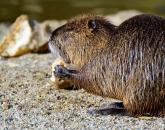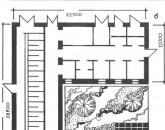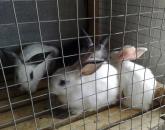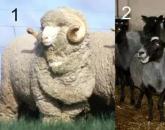Textile business: textile production from A to Z. Textile industry in Russia
Maybe not as popular as other technological areas, but nevertheless there is a demand for products, as well as offers. Unlike the domestic automotive industry, the textile segment can boast of its excellent and world-renowned quality. Only the Ivanovo region with its enviable history is worth something, because not just good products are born there, but real masterpieces.
So, let's try to designate a list of enterprises and organizations of the textile industry, distinguished by the release of high-quality products that are in demand among a wide range of consumers. All participants successfully work not only in their region, but throughout Russia, and often supply textiles abroad.
BELASHOFF
The trademark "Belashoff" belongs to the Shchigrovskaya feather-down factory. The company is developing dynamically, and the conveyor is running at full steam. A large textile factory in Russia specializes in the production of sleep products: linen sets, blankets, pillows, etc.
The shareholders have invested a lot of their money in production, providing the area with the most modern and high-tech equipment that produces not only environmentally friendly, but also high-quality products. The company's designers are full creative ideas and often create real masterpieces.
One of the main directions of the textile factory in Russia is rust-fillers: down, eucalyptus fiber, etc. A variety of products and the use of high-quality materials, coupled with modern technologies allowed the company to firmly gain a foothold in its segment and maintain leadership.
Doctor Big
The textile factory of Russia "Doctor Big" is located in Ivanovo and has been pleasing for more than ten years medical staff good quality and comfortable fit. The company produces more than 15 varieties of uniforms from the best materials. Projects are developed by professional designers with impressive work experience, as well as experience.
The assortment of the Russian textile factory "Doctor Big" is periodically replenished with new collections and supplemented with some touches at the request of the customer. You can apply company symbols on the form, and the most various methods. The latter protect clothes from chemical attack, not to mention regular washing.
In addition to clinic logos, you can order an individual design by adding a creative variety. The form can emphasize some individual characteristics of the enterprise or working conditions. The textile factory of Russia "Doctor Big" took care of the range of its products and flexible approach to every client. The company's products enjoy enviable popularity not only among specific, but also among ordinary consumers.
"Kazan Textile"
One of the largest textile factories in Russia, CJSC Kazansky Textile, is located in the city of Kazan. The enterprise is mainly engaged in the production of ribbons: furniture, edging, satin, nylon and technical.

The factory's products are in great demand not only in Russia, but are also supplied abroad to European countries. Moreover, exports have been established for years to come, and contracts have been concluded for impressive amounts. Such confidence of scrupulous Europeans says a lot: they will not buy low-quality products, especially since there are enough such enterprises in France and Germany.
"Barakat-Teks"
The company is located in Kazan, started work in 2000 and is the official representative of the Uzbek factory "Barakat-Teks". The long tradition of growing cotton has made itself felt: terry fabrics of exceptional quality come off the assembly line of the enterprise. And access to Uzbek "reserves" allows to significantly reduce costs and keep prices at a democratic level.

The company's products are characterized by special softness along with strength and hygroscopicity. Separately, it is worth noting the high-quality processing of products on the conveyor. Almost the entire range of the factory is hypoallergenic products. The last moment allowed the company to conclude profitable contracts with medical, children's and hotel facilities throughout the country.
"Barakat-Teks" was included in the list of textile factories in Russia, approved for all sanitary points. In addition, the products of the enterprise are a frequent guest abroad. Belarusians, Czechs and Scandinavians buy factory products with great pleasure.
"Vasilisa"
KPB TM "Vasilisa" is located in the city of Ivanovo and has been successfully operating in the textile market for more than 10 years. The factory is mainly engaged in the production of products to create coziness and comfort in the house. Very high quality blankets, pillows, curtains, tablecloths and other textile products come off the assembly line of the enterprise.

The factory places special emphasis on the environmental friendliness of products, where only natural materials and components are used. As for the design, everything is also good here: on branded shelves you can see products made of coarse calico, satin and poplin of various shapes, sizes with creative notes.
The company's products are respected not only throughout Russia, but also in the high quality of products, the use of natural materials in production, as well as attractive appearance allowed the factory to take its rightful place among competitors.
"VioTeks"
The factory has been operating for more than 10 years and pleases its consumer with excellent knitwear in almost all directions. The assortment of the enterprise is constantly expanding, and the management tirelessly follows new trends and fashion trends.

Factory designers are constantly experimenting with cuts, and the results justify all expectations. Beautiful clothes come off the assembly line, where aesthetics harmoniously synergize with functionality and practicality.
The most successful collections of the factory can be found at company stands with dressing gowns, pajamas, shirts, shirts and T-shirts. There are also warmer clothes in the assortment of the company: sweatshirts, jumpers, etc. It should also be noted that the company produces products for buyers of any configuration and for all ages.
Knitwear is sewn from fabrics of different quality and composition, so the products are available for all categories of consumers.
The first place in terms of demand for products has always been and will be the food market. This is not surprising, because it is here that goods that are included in the category of vital for every person are sold and bought.
It is followed by the textile industry. Surprisingly, in this segment, high demand for products is combined with insufficient supply from domestic producers. The share of goods produced by factories and plants in our country is only one fifth of the entire market.
The rest is occupied imported goods imported both legally and counterfeit. Of course, this state of affairs has the most negative impact on both Russian manufacturers themselves and the country's economy as a whole. There is another problem - the production of textiles at domestic enterprises is often frozen for long periods due to the high cost of raw materials, interruptions in supplies and the need to modernize equipment.
State participation in the development of the industry
The situation must change radically, and the government is already beginning to take steps to improve it. In particular, a strategy has been adopted aimed at developing light industry in our country until 2020.
In turn, the state has taken seriously the problem of domestic production: support for enterprises is provided both in the field of financing and subsidizing the purchase of raw materials, and in the issue of technical modernization of production. This allows us to think that changes are inevitable, and small improvements can already be seen today, in 2014.

Textile industry in Russia: current state
Today the situation is such that the share of imported products in the textile market in Russia still prevails. However, compared with the past decade, significant changes in the direction of its reduction are noticeable. Over the past 10-12 years, the Russian light industry has grown at a record pace, and this moment domestic textile production is estimated at about 70-85 billion rubles.
The industry employs about 700 large and up to 5 thousand medium and small enterprises, the total volume of production of which is about 200 billion rubles. At the same time, this segment is still underestimated by Russian investors, which means it's time to enter the market.
An average textile enterprise is now 20-30% cheaper than a food enterprise with the same level of profitability. Those entrepreneurs and investors who today pay attention to this line of business, in a few years will be able to reap a good "harvest" with the right approach to business. We will talk further about how to competently organize the production of textiles in our country.

The main questions on the organization of textile production
Of course, to say that today it is the most profitable business in Russia, it is still early. However, there is no doubt that the return on such production can be quite high, and in the long run. This direction is suitable for strategic investors and entrepreneurs looking to the future.
Therefore, today it is important to approach the issue of organization textile production from a completely new position, focusing on innovation and relevance. What points should be considered when creating own enterprise from scratch? The key factors are:
- Organization of the design department. IN modern world without the work of these specialists can not do. One of the main conditions for high demand for your company's products will be the relevance and originality of fabric design. Moreover, the development of new textile collections should be carried out regularly, and not one-time. Therefore, the plant / factory must necessarily have its own department with a group of designers working together and under the guidance of its owner.
- Organization of direct production. This issue requires no less attention. Where and by whom fabrics will be made depends on the availability of sufficient investment. So, some entrepreneurs create their own production workshop from scratch, others place orders for finished designs between home workers. In addition, many fabric manufacturers in Russia place their production in Chinese factories (due to the availability of cheap labor and good technical equipment).
- To organize your own textile production, you need to obtain an appropriate certificate for your products, think over and plan the technology for manufacturing fabrics, purchase modern equipment and hire staff (from cutters and seamstresses to an accountant).
- For the sale of products, it will be necessary to think over its transportation. If the enterprise is large, then you will need your own fleet. Small factories/shops for the production of textiles use the services of third-party companies.
- Like any commercial activity, textile business requires advertising. There should be several effective channels: your own website on the Internet, advertising blocks in specialized magazines, your own booklets with fabric samples. A good (and even obligatory) addition will be participation in exhibitions organized for representatives of this market segment. This will allow you to make useful contacts in your field, expand dealerships and retail chains for more efficient product distribution.
All these points are important and, moreover, obligatory steps in building a truly successful production textiles in modern Russia. None of them can be neglected if you really want to organize a highly profitable business that can not only survive, but also function effectively for a long time.

Textile production technology and types of fabrics
Above, we examined the main issues that are important for every entrepreneur who decides to engage in the textile business in Russia. Now let's dwell in more detail on the actual manufacture of fabrics. This process includes the choice of assortment, the production technology itself and necessary equipment for its implementation.
Types of fabrics and their features
All existing textiles are divided into large and smaller types. In general, fabrics can be divided into natural and chemical. The former can be of plant origin - cotton, linen, jute, etc., and animal - silk, wool, etc. The latter are divided into synthetic, artificial and mineral.
Natural fabrics of plant origin
Cotton fabrics are made from a mixture of cotton and other fibers. This category is very common and has the highest demand in the segment of natural materials. They differ depending on the density and type. This is the well-known denim, coarse calico, chintz, cloth, batiste and others. Linen fiber is less elastic than cotton. Fabrics made from it have a rough surface and a more rigid structure, and their production is more expensive.
Textiles of animal origin
The basis of silk production is the silkworm. This type of textile is characterized by elasticity and strength, and therefore is in great demand in production. It is used to obtain materials such as velvet, satin, etc. Russian manufacturers for the manufacture of woolen fabrics, as a rule, sheep's wool is taken. It retains heat well, does not absorb odors and moisture, does not wrinkle well.
chemical fabrics
Man-made fibers are also widely used in the modern textile industry. Viscose and acetate fabrics are light and smooth, have an attractive appearance and good hygienic properties. Polyamide materials are durable, wear-resistant, but they absorb fat and repel moisture, and therefore are unhygienic. Polyester is in great demand, as it is used for the production of clothing.
Textile production technology
The key moment that determines the entire production of textiles and the organization of its individual processes is the fabric manufacturing stage itself. It consists of several basic steps, which we will now look at:
- Preparation. Obtaining yarn from fibers by processing them - loosening, scutching, combing.
- Spinning of hard fiber. A textile thread is obtained from disparate cotton fibers.
- Direct production of fabric on looms.
- Final finishing procedure. As a result of this stage, the fabric acquires such properties as strength, softness, smoothness, waterproofness and others.
This is a general description, and each of the above steps has its own nuances.

Necessary equipment
At the same time, a large number of various equipment is involved in the fabric manufacturing process at all steps. From the mandatory for the organization of a full-fledged production process can be distinguished:
- roving machine;
- loom;
- weft winding machine;
- winding machines and automatic machines;
- warping machine;
- grinding machines;
- glue cookers;
- punching machines;
- knotting machines.
As you can see, the list of equipment is impressive. Therefore, a fully functioning textile production requires a large area of premises, several warehouses (for raw materials and finished products), as well as a sufficient number of employees to serve it and organize effective management.

Conclusion
To date, the textile market is developing at a fairly good pace - at least 25% per year. This niche still needs competent entrepreneurs and large investments to organize modern equipment and the same approach to the implementation of production.
Textile production - highly profitable business in Russia and will remain so for the next 7-10 years, and possibly longer. If you have not decided on the segment of capital investment and business organization, then now is the time to enter the textile market.
Manufacturers of fabrics in Russia - in the catalog there are domestic weaving factories, their addresses and websites. Manufacture and direct sales of knitted, furniture, curtain, bed and other fabrics. Factories send price lists, catalogs 2019 upon request. Deliveries to the regions and for export, the opportunity to become a dealer.
The market of light industry, which includes the production of textiles and fabrics, in Russia is poorly supported by the state with a high demand for products. Suffice it to recall the "shuttle traders" from the 90s, who selflessly made up for the lack of fabrics and textile goods on the shelves.
Today, the share of imported fabrics Russian market great. According to RBC, it is ~42%, and this official information excluding illegal shipments of counterfeit fabrics from neighboring countries. Russian manufacturers own 15-16% of the textile market.
The quality of Russian products is at a decent level, which is directly related to the certification of enterprises and manufactured fabrics. Russian standards in this regard are among the most stringent in Europe.
Textile factories in Russia offer wholesale buyers:
- product quality, confirmed by relevant certificates;
- flexible formation of wholesale prices and the availability of discounts on the volume of purchases;
- profitable terms supplies;
- amortization of transport costs;
- minimum dimensions and the cost of the first order.
The Internet exhibition offers you cooperation with both large and small fabric suppliers own production. The companies produce fabric for curtains, overalls, bed linen in accordance with GOST and international quality standards.
Weaving factories are light industry enterprises that produce textile fabrics - fabrics obtained on a loom by interlacing warp (longitudinal) and weft (transverse) threads perpendicular to each other.
Cotton, silk, linen, woolen, jute, hemp threads, as well as threads obtained from artificial and synthetic fibers serve as raw materials for obtaining products in the weaving process.
Fabric manufacturing technology is a combination of several processes, including:
1) preparatory operations:
Preparation of the warp (unwinding the threads, i.e. rewinding them onto one bobbin; warp, i.e. connecting a large number of threads into one warp, their parallel arrangement relative to each other and the same tension on a common warping roller; sizing - strengthening the threads by impregnating them dressing (starch paste); probing - threading threads into certain details of the loom);
Weft preparation (unwinding, i.e. rewinding threads onto spools);
2) actual weaving;
3) final operations (measuring the length of the final product; cleaning and cutting fabrics, controlling their quality, laying products).
In accordance with technological process production of fabrics in the structure of weaving production there are:
1) a preparatory workshop equipped with winding, warping, sizing, bobbin-winding machines, punching machines;
2) a weaving shop with the main production machines - looms, which are:
Mechanical, semi-mechanical, automatic;
According to the principle of weft laying - multi-shuttle, shuttleless (pneumatic, hydraulic, rapier, pneumo-rapier, machines with micro-layers);
By design - flat and round;
narrow and wide;
For the production of light, medium, heavy fabrics;
Eccentric (for the production of fabrics with a simple weave); carriage (for the production of fabrics with a small pattern); jacquard (for the production of fabrics with a complex and large pattern);
3) the rejection department, which carries out all operations on production lines using measuring and grading machines.
The classification of the final products of weaving factories - fabrics - is very diverse.
According to the type of raw materials, fabrics are:
- natural (from vegetable raw materials - cotton, linen, jute, etc.; from raw materials of animal origin - woolen, silk);
- artificial (viscose, acetate, etc.);
- synthetic (polyamide, polyesters, polypropylene, polyvinyl);
According to the composition of the raw materials, fabrics are distinguished:
- homogeneous (from threads of the same type or with an admixture of other threads, not exceeding 10%);
- mixed (of different types threads: for example, 70% wool, 30% synthetic fiber).
According to the purpose of the fabric are:
- household (clothing - linen, dress, costume, scarf, etc.; decorative - furniture, curtains, etc.; moisture-absorbing - towel, napkin);
- technical.
The process of weaving began to be mastered by people in the Neolithic era. The invention of the first hand loom took place 5-6 millennia BC. Attempts to mechanize weaving began in the 16th and 18th centuries. The first machine weaving factory in Russia was opened by the manufacturer Popov in 1846 in the town of Shuya. At the beginning of the 20th century, the first shuttleless looms began to appear, among which were the designs proposed by Soviet engineers S. A. Dynnik (in 1927), V. E. Leontiev (in 1936), V. A. Prozorov ( in 1949)
View information about the project
When you buy a product or service from someone, you give him money for development, finance him (help). Without buying - do not help (do not finance). By buying Russian goods and services, you are helping Russian people. This is reasonable for you if you are part of the Russian people.
Dmitry Mezentsev
Subscribe to RUSSKIYSOYUZRF @russkii_souz
The information you add must meet our selection criteria
- Russian manufacturers- these are Russian owners of production, producing goods on the territory of their country, registered in it and using the labor of Russian workers. Accordingly, they produce Russian goods.
- Russian owners or co-owners of production, using something foreign in the production process (companions, employees, territory, etc.) are placed in the section "Production with Russian participation". Accordingly, they produce goods with Russian participation.
- Russian sellers- These are Russian entrepreneurs who use the labor of Russian workers and sell Russian goods or goods with Russian participation. If the store has at least one shelf with Russian goods, then the store can be placed in the catalog and advertise these goods.
- Russian services provided by Russian entrepreneurs who use the labor of Russian workers and seek, if possible, to use Russian goods.
Also be sure to check out
Popular
- Pigs for profit: we develop our business Profit from pig breeding at home
- Excursion to the Moscow brewing company Mytishchi Brewery
- Burger King: addresses, menu, delivery
- Russian refineries: main plants and enterprises The scale of Russian oil refining
- Business idea: release of board games
- Production of milk, dairy products
- Encyclopedia of Marketing. FMCG - what is it? The FMCG market and its marketing secrets What does fmcg mean
- Halva production and its types
- Working from home for retirees: ideas and analysis Maintaining a YouTube channel
- Earnings on YouTube for views Income on YouTube from 1000




